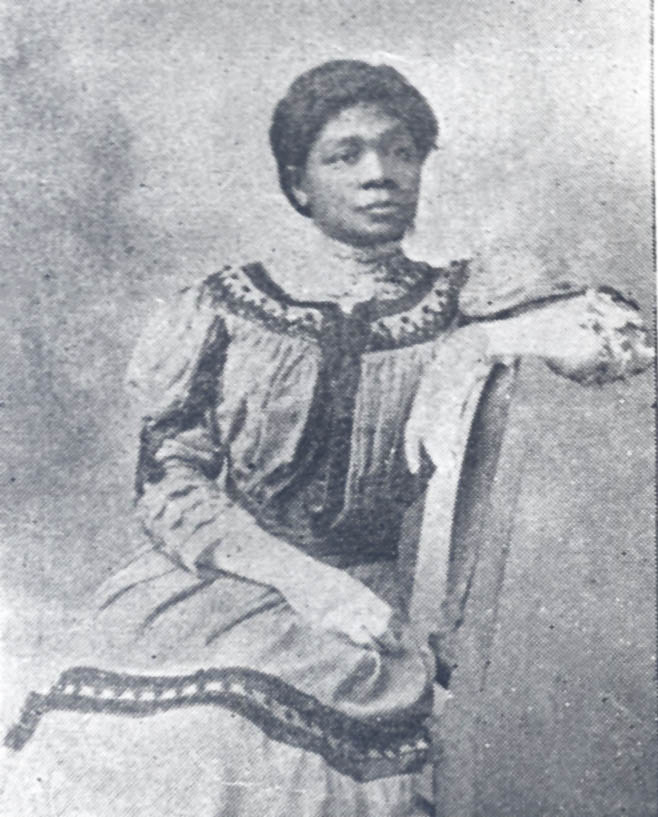Harriet “Hattie” Redmond was a leader in the long struggle for Oregon woman suffrage, especially during the successful campaign of 1912. The right to vote was especially important to Redmond as a Black woman living in a state that had codified Black exclusion laws in its constitution. Redmond’s work for voting rights helped lay the groundwork for the Black Civil Rights movement of the mid-twentieth century. Her parents, Reuben and LaVinia “Vina” Crawford, were emancipated slaves who instilled their quest for freedom and full citizenship in their daughter. Hattie helped bring those dreams to fruition through her civic activism.
Harriet Crawford was born in about 1862 in St. Louis, Missouri, the oldest of eight children. The family lived briefly in Hood River, Oregon, before permanently settling in Portland by 1880. There they became a prominent family in the city’s nascent African American community of several hundred people. Vina Crawford worked as a domestic, and Reuben Crawford worked as a skilled ship caulker. He was also active in the Republican Lincoln Club and the Portland Colored Immigration Society. The family attended the Mt. Olivet Baptist Church on Northwest Seventh (now Broadway) and Everett after its founding in 1907. Hattie Redmond held suffrage meetings and lectures at the church in 1912.
On November 27, 1893, Hattie Crawford married Emerson Redmond, who worked as a waiter at Portland’s elite hotels during his career, notably the Portland Hotel. The couple had no children. Emerson Redmond died at the age of forty-four at the Multnomah County Poor Farm on March 26, 1907.
Hattie Redmond’s civic activities centered on the Oregon Colored Women’s Council (later named the Oregon Colored Women’s Club) and the Portland YWCA. During the campaign for woman suffrage in Oregon in 1912, she was president of the Colored Women’s Equal Suffrage Association. She organized meetings and educational lectures on woman suffrage at Mt. Olivet First Baptist Church and served on the State Central Campaign Committee. Following the triumph of the woman suffrage vote on November 5, 1912, she used her newly gained right by registering to vote in April 1913.
Throughout her life, Redmond labored at some of the limited jobs then open to African American women. She worked as a hairdresser, a domestic, and a department store duster. Her employment as a janitor for Oregon’s U.S. District Court judges lasted twenty-nine years, and she received a pension when she retired in 1939.
Hattie Redmond died of bronchial pneumonia on June 27, 1952, at the age of ninety. Her contributions to women’s voting rights and full citizenship were virtually unknown until historians found the details of her life in the historical record during the 2012 centennial celebration of Oregon woman suffrage. In the years after her death, her simple grave marker at Lone Fir Pioneer Cemetery became buried. Members of the Friends of Lone Fir Cemetery uncovered the marker and replaced it with a headstone honoring Redmond’s life and work with the inscription “Black American suffragist.”
In the summer of 2018, Oregon State University President Ed Ray announced that three campus buildings would be renamed to better reflect the history of the area and the ideals of the university. The exhaustive research project was part of a national movement to rename buildings that had been named after individuals who had “racist legacies.” At OSU, the building that housed the Women’s Center was changed from the Benton Annex to the Hattie Redmond Women and Gender Center.
-
![]()
Hattie Redmond.
Courtesy Oreg. Hist. Soc. Research Library, bb09628
-
![Hattie Redmond's voter registration card, 1913]()
Hattie Redmond's voter registration card, 1913.
Hattie Redmond's voter registration card, 1913 Courtesy Multnomah County Archives
-
![Hattie Redmond's marriage license, 1893]()
Hattie Redmond's marriage license, 1893.
Hattie Redmond's marriage license, 1893 Courtesy Multnomah County Archives
-
![Hattie Redmond's headstone, Lone Fir Cemetery, Portland.]()
Hattie Redmond's headstone, Lone Fir.
Hattie Redmond's headstone, Lone Fir Cemetery, Portland. Courtesy Friends of Lone Fir Cemetery
Related Entries
-
Abigail Scott Duniway (1834-1915)
Outspoken and often controversial, Abigail Scott Duniway is remembered …
-
![Black Exclusion Laws in Oregon]()
Black Exclusion Laws in Oregon
Oregon's racial makeup has been shaped by three Black exclusion laws th…
-
![Lizzie Weeks (1879-1976)]()
Lizzie Weeks (1879-1976)
Lizzie Koontz Weeks was an African American activist in Portland in the…
-
![Reuben Crawford (1828–1918)]()
Reuben Crawford (1828–1918)
Reuben Crawford was a leader in Portland's Black community from the 187…
-
Woman Suffrage in Oregon
The campaign to achieve voting rights (also called suffrage or the fran…
Related Historical Records
Map This on the Oregon History WayFinder
The Oregon History Wayfinder is an interactive map that identifies significant places, people, and events in Oregon history.
Further Reading
Century of Action: Oregon Women Vote, 1912-2012. www.centuryofaction.org
Death Certificate for Hattie Redmond, 11 June 1952, File No. 7126, State of Oregon, Board of Health - Portland.
"Colored Suffragists Act," The Oregonian, 17 September 1912, p.12.
"OSU changing three building names to promote inclusivity," Saul Hubbard, The Register-Guard, 31 July 2018.
Silvis, Helen. "Black Suffragist Will Be Celebrated July 21 at Lone Fir Cemetery." The Skanner News, July 12, 2012.









